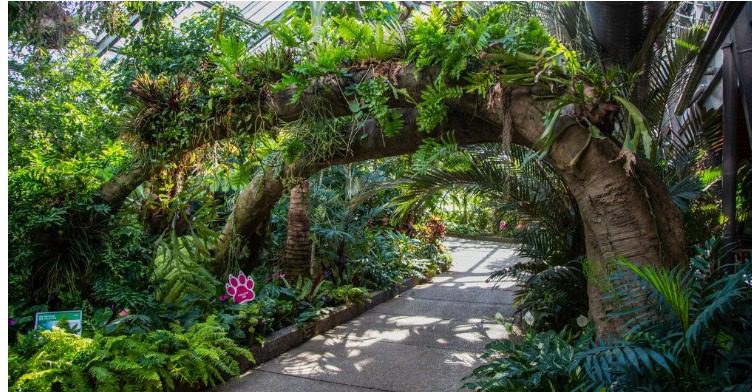There are a variety of plants that grow in natural harmony here, and each play a role in supporting our healthy environment and ecosystem. As students are guided through the ENMAX Conservatory by one of our conservation educators, they will discover the unique qualities of all plants and how their growth can impact sustainability in our world. Students will reflect on the question “how can we grow and farm plants in a sustainable way?” as they journey through our gardens.
Length: 60 minutes
Program times: 10:00 a.m., 11:15 a.m., 12:45 p.m.
Maximum students: 30
Cost:
- October-March: $240
- April-June: $295
Register Now
Curricular Connections
Kindergarten
Earth Systems:
- Demonstrate respect while interacting with environments.
Grade 1
Living Systems:
- Determine how a local environment meets the basic needs of plants and animals.
- Discuss how humans depend on plants and animals to meet their basic needs.
Earth Systems:
- Discuss how changes in the appearance of environments, plants, and animals are related to the seasons.
Grade 2
Living Systems:
- Discuss ways to respect plants and animals while interacting in various environments.
- Discuss and compare life cycles of various plants and animals.
Grade 3
Living Systems:
- Investigate and discuss how plants and animals respond to stimuli in their environments in order to survive.
- Explain interconnections in environments, including how plants depend on animals and how animals depend on plants to survive.
Grade 4
Living Systems:
- Relate the external structures of plants to their functions.
- Compare the external structures of various plants and animals in relation to function.
Grade 5
Living Systems:
- Examine the transport systems of plants and describe their functions.
Earth Systems:
- Distinguish climate from weather.
- Explain how climate can affect human and other animal activity.
Grade 6
Living Systems:
- Represent and connect the biotic and abiotic components of an ecosystem.
- Relate the preservation of various ecosystems to possible actions that address climate change.
- Compare the characteristics of two ecosystems.
- Examine the diversity of animals and plants in various ecosystems in relation to abiotic components.
Earth Systems:
- Describe possible effects of climate change on land, plants, humans, and other animals.
Grade 7
- Interactions and Ecosystems.
- Plants for Food and Fibre.
Grade 8
- Freshwater and Saltwater Systems.
Grade 9
Grade 10
- Energy Flow in Global Systems – Biomes.
Grade 11
- Changes in Living Systems.
- Ecosystems and Population Change.
Grade 12
- Population and Community Dynamics.
On-Site Program Information and FAQ

